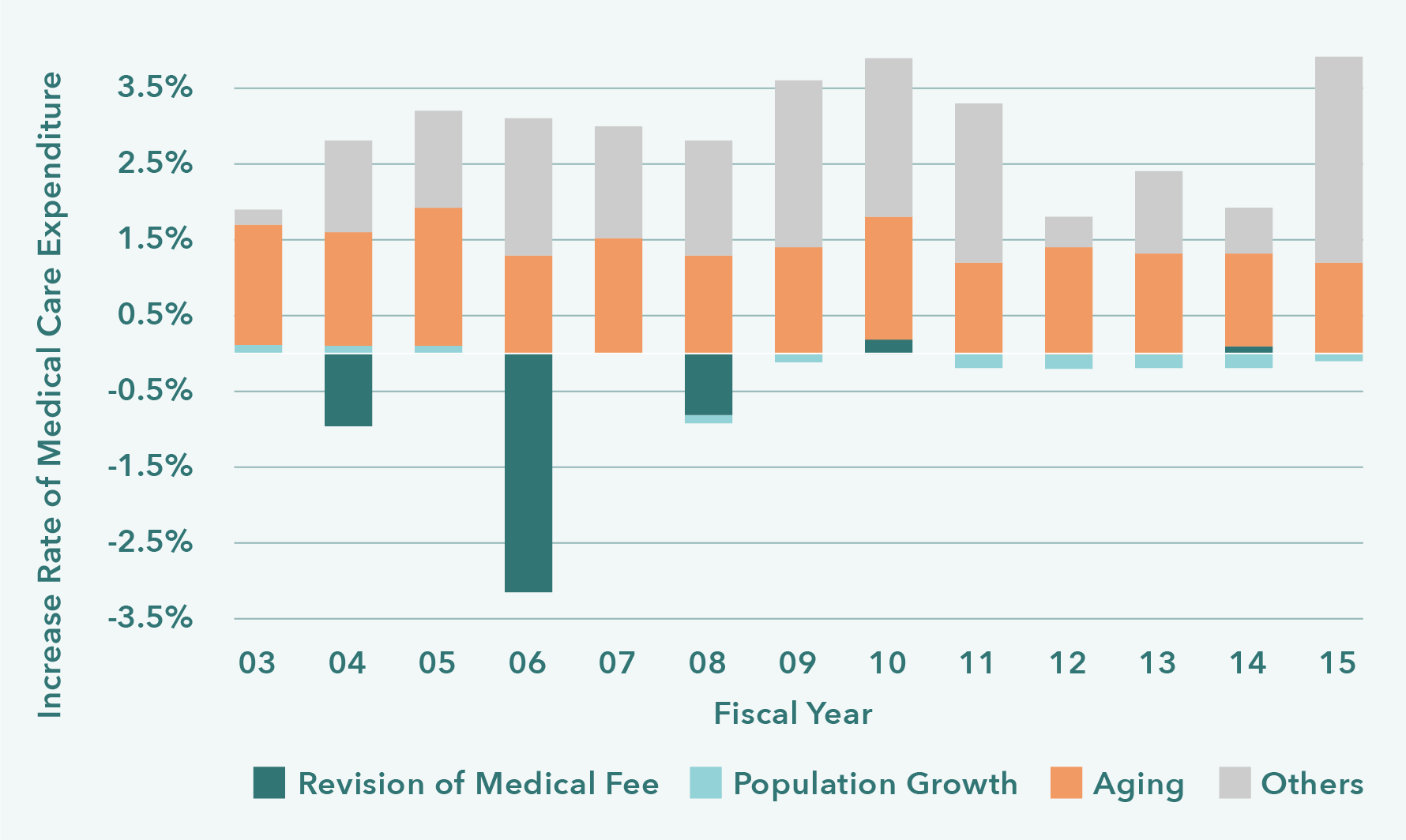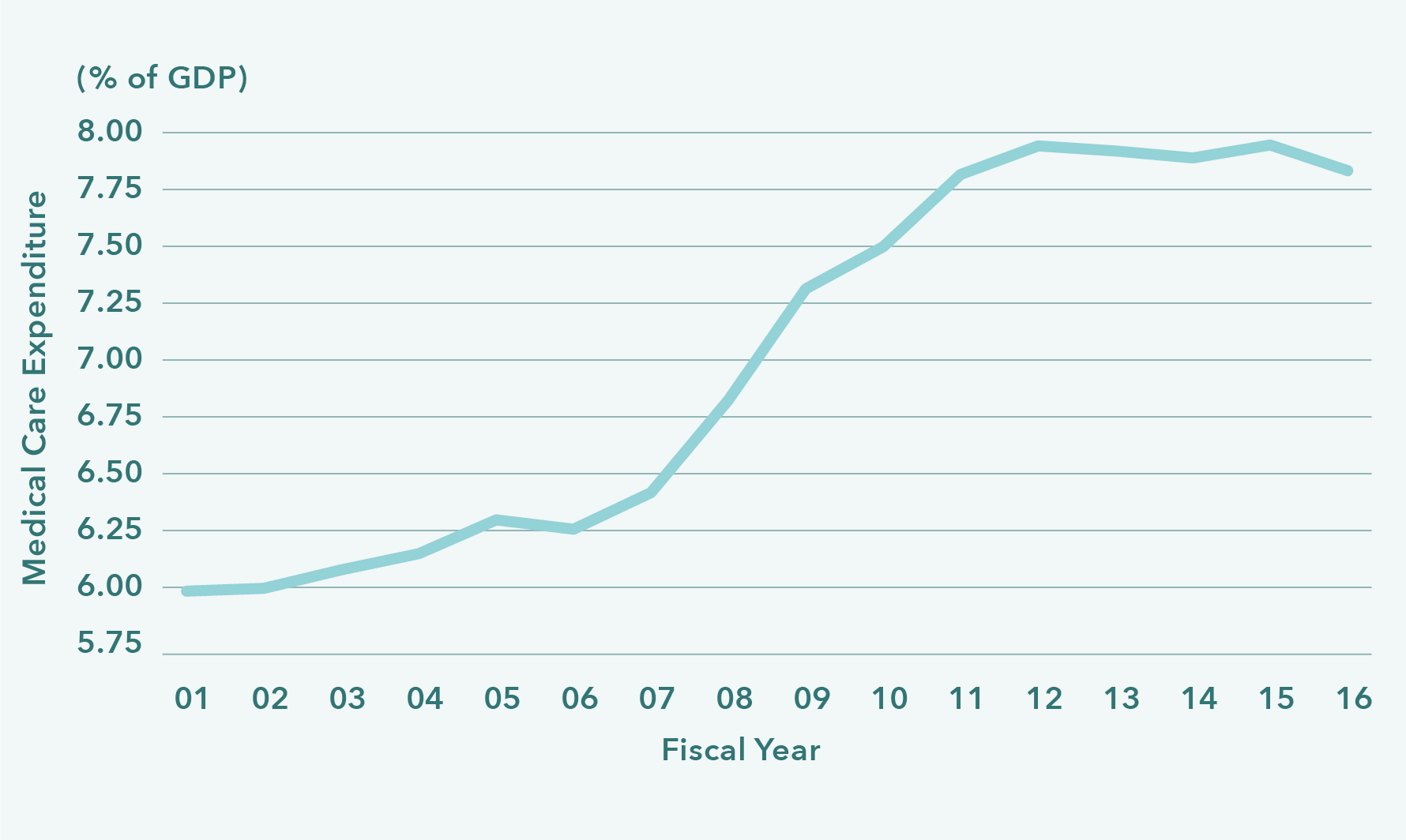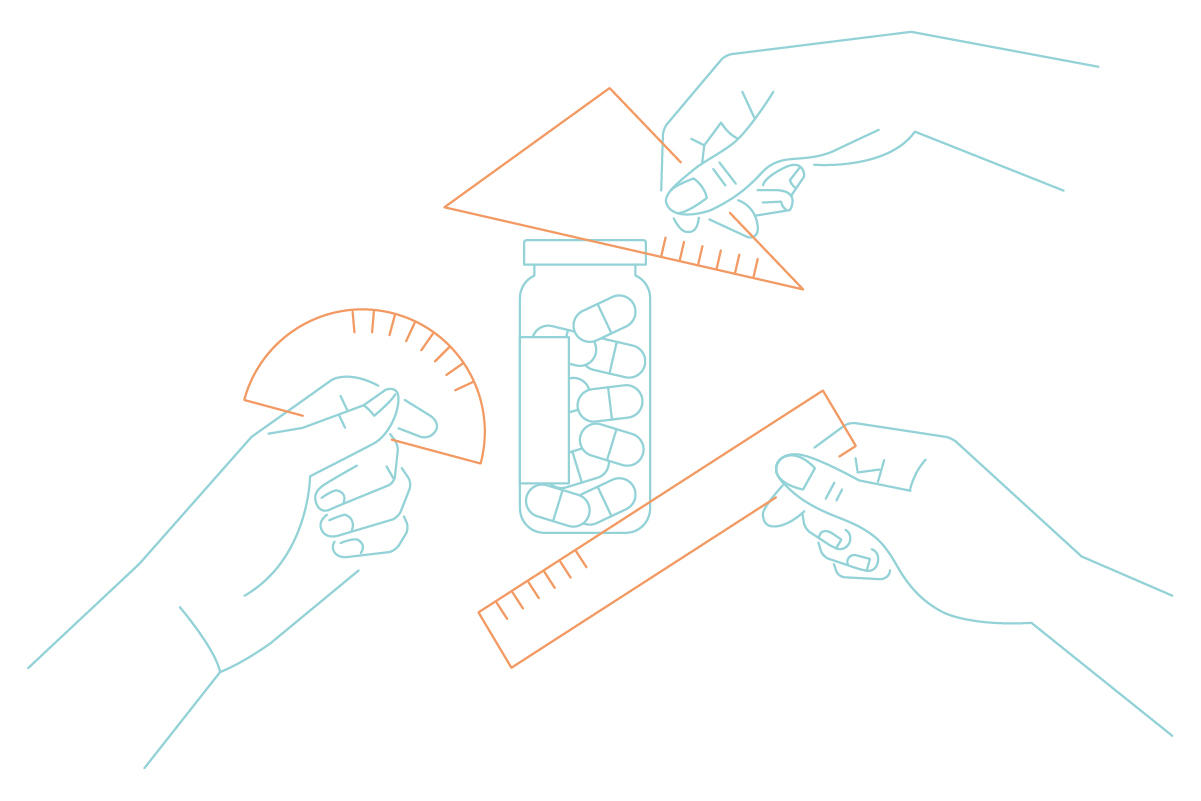1. Current status of medical care expenditure in Japan
You probably know the trend of increase in the Japanese medical care expenditure. In 2016, the total medical care expenditure was about JPY 42 trillion (USD 380 billion), about a 10 trillion (USD 90 billion) increase from 2001 (about JPY 31 trillion (USD 280 billion). Over the past 25 years, medical care expenditure has grown by about 2% annually.

Excluding out-of-pocket payment (30% of the expenses for many of the readers) and the insurance premium, the healthcare expenses are paid by tax. The amount of medical care expenditure paid by tax rose to about JPY 16 trillion (USD 150 billion) in 2016, accounting for about 40% of the entire medical care expenditure.
Of JPY 16 trillion, central government paid about JPY 11 trillion (USD 100 billion) (the remainder is paid by the local governments). This suggests that large national budget is used for medical care. For example, the amount of the national budget covering public construction projects is about JPY 6 trillion and that covering education is about JPY 5 trillion. These are considerably smaller than the expenditure for medical care (in FY 2017).
2. Why is medical care expenditure increasing?
As increase of the medical care expenditure exceeds the economic growth, the burden from medical care expenditure becomes higher. Actually, the proportion of medical care expenditure in the gross domestic product (GDP) has been increasing almost continuously.


Why does the medical care expenditure continuously increase? For example, aging is one possible reason for increase of medical care expenditure. In general, the expenses are larger for elderly people. Increase of the average age of the population would increase the medical care expenditure (Japan is one of the most aging countries). The MHLW has been estimating the growth of medical care expenditure for each of four factors: “aging” “population growth,” “revision of medical fee (every 2 years)” and “others.”
Of the four factors, aging has the greatest influence, but “others” can also not be ignored. The factor “others” has not yet been precisely defined, but development and spread of new treatment is considered to play a significant role in this factor.
3. Necessity of cost-effectiveness evaluation
Factors causing increase of medical care expenditure following development/spread of new treatment include medicines and medical devices. When a medicine or medical device with high cost is covered by public health insurance, the expenses excluding the out-of-pocket payment are paid by public money, such as tax and insurance premium. In this sense, whether or not the medicines and medical devices used are cost-effective, is important for efficient use of our public money.
The prices of medicines and medical devices are set by the MHLW in accordance with certain rules. Under such circumstances, the MHLW scientifically conducts cost-effectiveness evaluation, to confirm whether or not the prices set for drugs and medical devices are appropriate.
Achieving more efficient healthcare to be important in assuring the “sustainability” of the current public healthcare system. Cost-effectiveness evaluation can contribute to evidence-based health policy for improving the efficiency of healthcare system.
